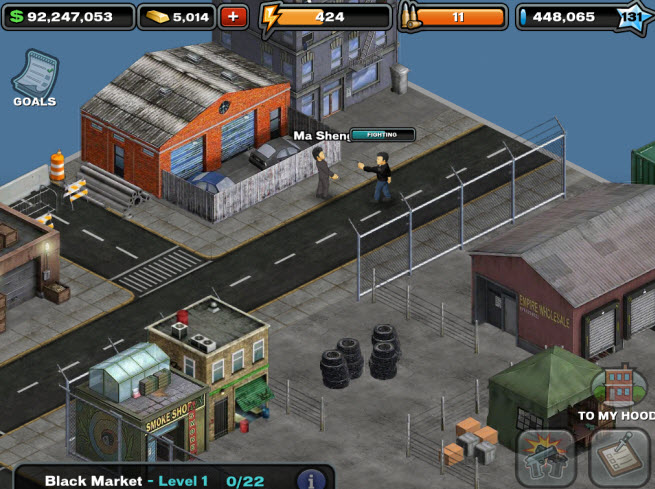Its numbers are still small in the overall mobile game market, and it isn’t making money yet. But Gree‘s North American game business grew 38 percent in the second quarter. That’s a sign that the company is making progress in its quest to become a worldwide mobile social gaming giant.
[aditude-amp id="flyingcarpet" targeting='{"env":"staging","page_type":"article","post_id":510795,"post_type":"story","post_chan":"none","tags":null,"ai":false,"category":"none","all_categories":"games,mobile,social,","session":"C"}']The North American division is a major strategic expansion for Gree, which is in a race with rival Japanese gaming firm DeNA to dominate the market. Gree bought mobile gamemaker Funzio during the quarter for $210 million.
AI Weekly
The must-read newsletter for AI and Big Data industry written by Khari Johnson, Kyle Wiggers, and Seth Colaner.
Included with VentureBeat Insider and VentureBeat VIP memberships.
Naoki Aoyagi, the chief executive of Gree International, said in an interview with GamesBeat that two of the strongest titles are Funzio’s Modern War for the iPad and Gree’s Zombie Jombie. Funzio titles showed a 27 percent increase from the first quarter and a 23 percent revenue increase since the acquisition.
“Investors are very interested in what we are doing in the U.S. and global markets,” said Aoyagi (pictured right).
Aoyagi declined to say if the U.S. business is making money. He said that the company is focused on revenue growth now. That probably means the company isn’t making money and it is spending heavily on marketing its games. Earlier, Gree said it would spend a whopping $50 million on mobile game marketing. But despite rumors to the contrary, Gree isn’t spending all of that money at once, said Aoyagi.
Early on, Gree was spending a lot to explore the performance results of various marketing channels. Now it knows what works better, and it can spend more efficiently, said Aoyagi said, who noted that Modern War iPad and Zombie Jombie are both showing average revenue per daily active user (ARPDAU) above $1. About 40 percent of revenue comes from Gree’s iPad apps. Overall, Gree is publishing on iOS (iPod Touch, iPhone, and iPad), Google Play, and Amazon. All together, Gree had six games out in the second quarter.
“We just started, and we have a lot of games in the works,” said Aoyagi. “July was our highest monthly revenue number to date.”
Aoyagi believes that the fragmented mobile game market will hit its stride and see a dominant player emerge in the next 18 months. That’s why his company is in a rush and spending strategically to expand. Six years ago, the Japanese market was tiny. Japan’s mobile social game market is smaller in terms of the number of users, but those users are spending so much money that the market has reached $4 billion to $5 billion in annual revenue. Gree has gained a multibillion-dollar valuation and more than a billion in revenues solely on the success of the Japanese market. The U.S., logically, should be a lot bigger.
[aditude-amp id="medium1" targeting='{"env":"staging","page_type":"article","post_id":510795,"post_type":"story","post_chan":"none","tags":null,"ai":false,"category":"none","all_categories":"games,mobile,social,","session":"C"}']
Mark Pincus, the chief executive of Zynga, said at our GamesBeat 2012 conference that the mobile game market still needs a triggering event to generate as much revenue per game as the Facebook social game market. But Aoyagi believes that the companies that invest now will be the winners.
“If you don’t invest up front, you will miss the whole opportunity,” he said. “I think everybody should make a big bet on mobile.”
VentureBeat's mission is to be a digital town square for technical decision-makers to gain knowledge about transformative enterprise technology and transact. Learn More

